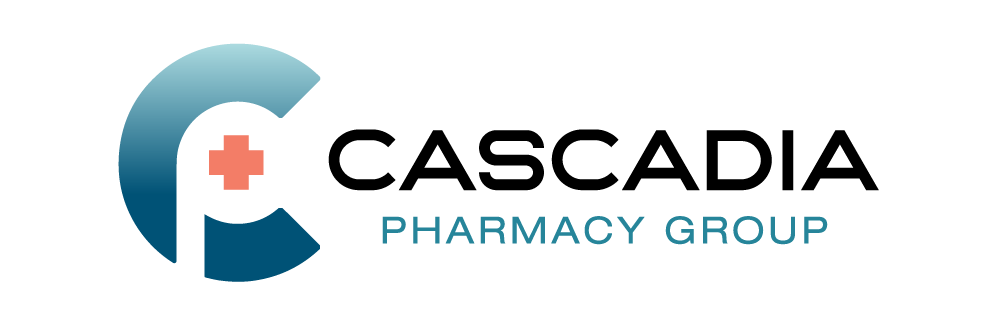Building a network to support independent pharmacy owners was not in Jeff Harrell’s plans when he graduated from pharmacy school. However, as a pharmacist who equally enjoys caring for patients and owning a business, he ultimately did just that — merging the two interests to help keep independent pharmacies independent.
Throughout his career, Harrell developed the skills necessary to lead a group of independent pharmacies. He earned his pharmacy degree from Washington State University in 2001, then worked at and eventually managed an independent pharmacy in the Seattle area. He found he enjoyed management and operations, including identifying cost savings opportunities and implementing practices to make the store more profitable. In 2006, he and a current partner bought a three-chain pharmacy, and it’s only grown from there.
“I learned a lot each time I did a new deal,” says Harrell, CEO, PharmD. “I also noticed that as I added stores, I was getting a better cost of goods.”
Driving profitability with streamlined management
Harrell eventually moved from behind the counter into pharmacy operations, continuing to grow his footprint. He now owns more than 40 pharmacies with about 20 different partners. Harrell formed Cascadia Pharmacy Group (CPG) in 2024 to help support each of the pharmacies with a diverse set of offerings. This enables the group to continue to serve patients in cities, suburbs and rural communities across the Pacific Northwest.
All pharmacy affiliates are independently owned and collaborate with CPG to centralize services. CPG supports both the purchasing and selling of pharmacies, as well as accounts receivable, credentialing, human resources, IT and marketing. Streamlining these processes and procedures gives each independent pharmacy more time to take care of their business and their community.
“We have a controller now who supports the back end of these stores, and it’s allowed the partners and managers to run the pharmacy and be the pharmacist,” Harrell says.
With all locations on the same pharmacy system and using the same printers, labels, vials and credit card processors, Harrell explains these services are easier to run and more cost effective. Harrell also shares that by working together, CPG has achieved a lower cost of goods for its member pharmacies. He shares an example of the network’s optimized approach in action after CPG developed a new process to roll out over 20 clinical services under Collaborative Drug Therapy Agreements (CTDAs) in Washington state.
“Every store is the same now, so if we have a pharmacist that goes from one store to another, because we often share staff, we don’t have any questions about what they can prescribe or what they can treat,” Harrell said. “We’ve just streamlined those processes and that has allowed us to grow.”
To further support these CDTA’s and their teams, CPG members can also access resources and different process guides through an internal portal. These resources include everything from marketing and social media calendars to purchase guides and performance reports, and that helps them better run their businesses.
With lower costs, back-office support, networking opportunities and an annual vendor show featuring 20 industry partners, CPG’s member pharmacies can focus on growing their businesses without worrying about the red tape that comes with independent ownership. This also empowers pharmacy staff at each location to stay involved in their community and deliver excellent care to their patients.
“I can’t put a price tag on that, but it’s worth a lot for these stores,” Harrell says.
Considerations for multi-store ownership
Harrell understands not every independent pharmacy owner wants to own more than one store. For those who do, he recommends consolidation as the first step.
“You can run them individually, but when you get to three, four or five, you’ve got to consolidate the administration,” Harrell says. “All stores are being done the same, and you can consolidate that. It’s a leap because pharmacies aren’t used to hiring people to just do one job, like payroll or accounts receivables. They’re doing that [function], but the consolidation of the administration centralizes that.”
He also reinforces the importance of finding like-minded people to work with or speaking with other industry leaders. Harrell, for example, is president of the National Community Pharmacists Association (NCPA). He’s found his involvement to be invaluable, learning from fellow independent pharmacists and operators about industry innovations. One of his takeaways came from a recent association meeting where he learned of several pharmacies using AI bots. They are using it specifically for refill data entry, and the bots can enter each prescription in 37 seconds.
“If a bot can run in conjunction with your pharmacy system, doing 400 scripts a day so they’re on hold and ready to go, that would save a lot of time and energy,” he explains. He believes this new technology doesn’t eliminate or minimize the pharmacist’s role but rather allows them to focus on other priorities.
Harrell encourages today’s independent pharmacy owners to think about how they can expand their position as vital community healthcare destinations — whether it be through immunizations, compliance packaging, medication monitoring, clinical services or medication sync.
“You’ve got to have a bunch of different colored eggs in your basket, all creating a revenue stream,” Harrell says. “You’ve got to have your full book of business: delivery, mail or compounding.”
Overall, Harrell remains optimistic for the future of independent owners as they balance running their pharmacy like a business while providing quality patient care.
“I actually see that lighthouse starting to brighten up for us,” he said.
*Original article published on Independently Healthy, a digital publication from Cardinal Health.

